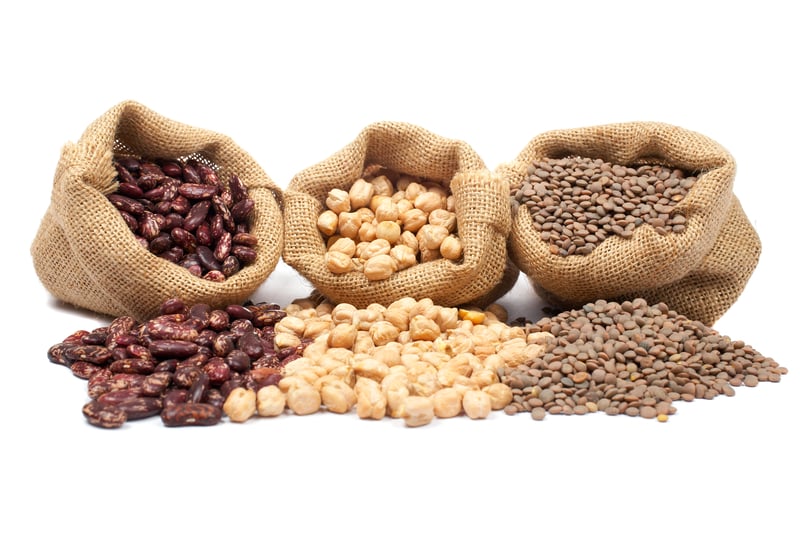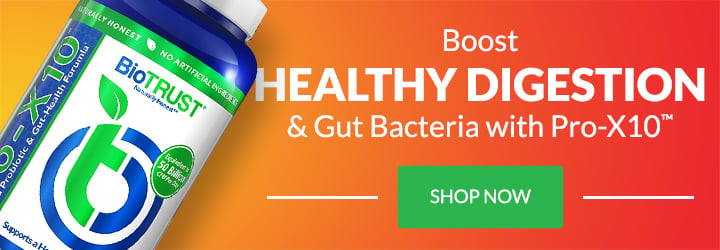22 Foods with More Protein Than An Egg

According to protein lore, few foods provide as much quality protein as an egg. And many of us think egg = protein. It’s an easy, convenient way to start the day. Plus, eggs are super affordable. However, some folks just aren’t that into eggs. In fact, there are people who kind of gag at the thought of eating eggs every day. Others just avoid animal products. And most of us certainly don’t want to live on eggs alone as our sole protein source.
So, how much protein does an egg provide anyway?2 One large egg has six grams of protein, with an extra-large egg packing 7 grams of protein. An average serving of scrambled eggs, for example, is 2 eggs, which provide 12 grams of protein and 160 calories.
While that is certainly respectable, there are other foods with comparable or more protein per serving. Obvious choices include meat (~22 grams protein/3 oz), poultry (~38 grams/cup), fish (~19 grams/3 oz), and seafood (~20 grams/3 oz), depending on the type and cut. However, there are several other options you may find surprising.
Here are our top 22 foods that provide more protein than an egg. What’s more, they’re all vegetarian-friendly, and many are vegan.
22 Foods with More Protein Than An Egg
1. Adzuki Beans. These beans may not be the most well-known, but with 9 grams of protein in just ½ cup (cooked), they provide a lot of protein. They also provide 8 grams of fiber in a serving.
2. Black Beans. If you can’t find adzuki beans at your grocery store, have no fear. Black beans also provide 8 grams of protein in a half-cup serving along with 6 grams of fiber. They are also highly versatile and work well in salads, soups, chili, and popular Tex-Mex dishes.
3. Kidney Beans. Another great choice is kidney beans. These are well-known for their high-fiber content—an astounding 14 grams—but they also provide a healthy serving of protein. That is, 7.6 grams in a half cup of cooked beans. They’re also high in resistant starch, which can help level out blood sugar, improve gut health, and keep you full for hours.
4. Garbanzo Beans/Chickpeas. These little gems continue to grow in popularity as a weight-loss superfood. They’re loaded with 7.3 grams of protein and a good dose of soluble fiber in just a half-cup. Because they’re so rich in nutrients, they can help boost gut health, support healthy inflammation, and fight belly fat by increasing satiety. Plus, they’re so versatile!
5. Mung Beans. For a tender, slightly sweet, nutty bean, add mung beans to the menu. They provide 7 grams of protein per half-cup and go great on salads and in a variety of other dishes.
6. Lentils. A member of the legume family, lentils come in several varieties—brown, red, green, black, and French, for example—that all provide a slightly different taste and texture. All, however, provide 9 grams of protein in a modest half cup serving of cooked lentils. While you can buy them cooked and canned, they are much faster and easier to cook than beans, so you can skip the canned versions if you choose. These tasty beans can be ready in just 15 to 20 minutes, with no need to soak. Plus, if you purchase split lentils, they take even less time to cook—just 5 to 7 minutes.
7. Tofu. If you scroll through some vegan recipes, you’re bound to come across more than a few that contain tofu. This versatile meat substitute provides 8 grams of protein per 3-oz serving and can even be used for an egg-free breakfast scramble.
8. Tempeh. Another protein-rich food made with soybeans is tempeh. But unlike tofu, tempeh is made from fermented beans. Typically grains or seeds (such as rice, flax, or millet) are added for a nuttier, richer flavor. Add sliced tempeh to a vegetable stir fry for an added 16 grams of protein per 3-oz serving.
9. Pumpkin Seeds. While often considered a healthy fat (as they provide 14 grams/serving), these delicious seeds also provide more protein than an egg—10 grams in just a ¼ cup serving. Try them raw or roasted; enjoy a small handful or added to trail mix. Or sprinkle a serving over your big leafy green salad for added crunch, protein, healthy fats, and flavor.
10. Hemp Seeds. With 10 grams of protein, healthy fats, and loads of vitamins and minerals, including iron, magnesium, phosphorus, copper, manganese, and thiamin, 3 tablespoons of hemp seeds deserve their reputation as a superfood. Toss some on a salad, into a smoothie, over soup, or simply as a snack.
11. Peanut Butter. Is it just me, or does everyone celebrate this high-protein food? Yes, it is higher in fat (with 16 grams per serving), but 2 tablespoons add 8 grams of protein to your dish, smoothie, on toast, or served with noodles. Peanuts in the raw also provide a nice serving of protein at 7 grams per ounce.
12. Almonds. For a quick protein-rich snack, you can’t beat a handful of almonds. In one ¼ cup, you’ll enjoy 7 grams of protein along with heart-healthy fats and fiber to hold you over until your next meal.
13. Kefir. Move over yogurt and cottage cheese… actually, go ahead and keep them both if you consume dairy—just add kefir too for a change of pace. A single cup of this thick, creamy drink provides 10 grams of protein. Just watch out for the fruit-flavored versions at the store as many also provide a hefty dose of sugar.
14. Quark. Another interesting dairy food that packs a protein punch is quark. This fresh German cheese with a texture similar to Greek yogurt provides 13 grams of quality protein in just half a cup. Add it to a smoothie, stir in a scoop of quality protein powder and top with fresh fruit, or use it to replace sour cream or cream cheese in recipes.
15. Greek Yogurt. If you really want a food that’s higher in protein than an egg, you can’t go wrong with Greek yogurt, which packs 20 grams in a small 7-oz container. And both the full fat and reduced-fat versions don’t disappoint with the super-thick, creamy texture that goes so well with fruit, nuts, honey, seeds, or even to stand in for sour cream.
16. Cow’s Milk. You may not have had a glass of cold, fresh milk since childhood, but if you’re looking for protein (8 grams), calcium, and vitamin D, it wouldn’t hurt to revisit your younger years (as long as you can tolerate dairy). To really take you back, throw some milk into a blender with some fresh strawberries for a fun treat. Then stick with a single cup of organic, grass-fed milk to get the most nutrition while keeping calories in check.
17. Cheese. Cheese is a staple for many reasons. Not only does it go well on pizza, grilled cheese, or as a rich, creamy snack, it also provides some quality protein to boot. Mozzarella, for example, adds 6.3 grams per ounce. Cheddar weighs in at 6.5 grams. And if you’re looking for a fancier, stronger cheese, gruyere provides a full 8 grams per ounce. Don’t forget cottage cheese. In just a half cup, you’ll enjoy 12 grams of protein. Hide some to your morning pancakes for added protein and creaminess. Even parmesan cheese provides 8 grams of protein per ounce. Whichever cheese you choose, you’ll also find plenty of healthy fats, vitamin D, and calcium. Just keep track of your portions as cheese is also higher in calories.
18. Quinoa. These tiny South American seeds provide 8 grams of complete protein per cup, so they’re often considered essential for vegetarian or vegan diets. They’re also pretty popular in muscle-building diets due to their high L-arginine content. Quinoa is also rich in healthy fats and fiber. Serve it up as you would any grain with veggies, beans, or a salad.
19. Farro. Another ancient grain making a comeback is farro. This wheat grain originally found in Italy has a chewier taste and texture to brown rice. It provides 8 grams of protein per cup and a nice dose of antioxidants like vitamins A and E.
20. Amaranth. While not as well-known as quinoa, this is another pseudo-cereal from South America that provides an impressive amount of protein—9.4 grams per cup. It’s also high in fiber, loaded with vitamins, and may help support lower blood pressure and decrease LDL cholesterol levels. It can be eaten like oatmeal, cooked and served like rice, added to veggies, or in a hearty, healthy salad.
21. Teff. Another grain-like option is Teff, which provides 9.75 grams of protein per cup. It also is a good source of fiber as well as iron. To eat, make it into porridge or instead of rice in a nutrient-packed risotto.
22. Kamut. Did you think we were done with ancient grains? Not yet. Kamut hails from ancient Egypt, and we’re thankful it’s now being “rediscovered.” It provides a full 9.8 grams of protein per cup along with minerals like magnesium, potassium, and iron and a huge dose of fiber (21 grams).
Whether you’re a meat-eating omnivore, are cutting back on animal products with a more flexitarian diet, or are going full-on vegetarian or vegan, when it comes to options with more protein than an egg, you have more than a few choices.





 7 Signs Your Body is Seriously Low on Collagen (not just wrinkles)
7 Signs Your Body is Seriously Low on Collagen (not just wrinkles) Health Expert: "Turmeric Doesn't Work (unless...)"
Health Expert: "Turmeric Doesn't Work (unless...)" 3 Warning Signs Your Probiotic Supplement is a Total Waste
3 Warning Signs Your Probiotic Supplement is a Total Waste

